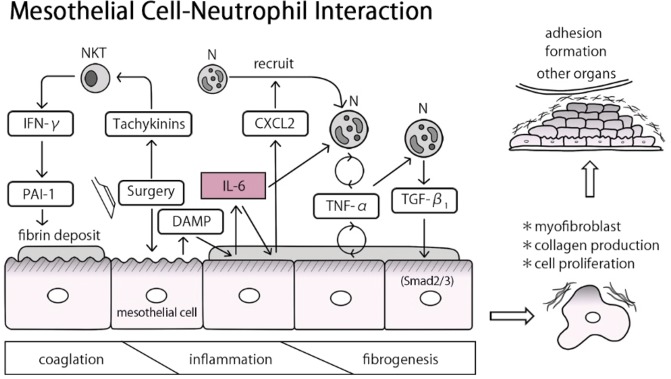Figure 6.
Proposed model for the role of IL-6 in the induction of postoperative adhesion formation. Upon surgery-induced injury, serosa-resident natural killer T (NKT) cells produce IFN-γ, thereby inducing PAI-1, which in turn facilitates fibrin deposition by preventing fibrin degradation as shown previously7. Subsequently, mesothelial cells produce CXCL2 and IL-6, which recruit and activate neutrophils, respectively. The neutrophils produce TNF-α in response to IL-6. Both mesothelial cells and neutrophils produce TNF-α in response to TNF-α. Thus, IL-6 signaling plays a central role in activating the TNF-α-amplifying positive-feedback circuits. The final steps of the initiation of adhesion formation occur when TNF-α induces neutrophils, but not mesothelial cells, to produce TGF-β1. TGF-β1 subsequently activates mesothelial cells to transdifferentiate into myofibroblasts that produce fibrosis-promoting molecules such as collagen.

